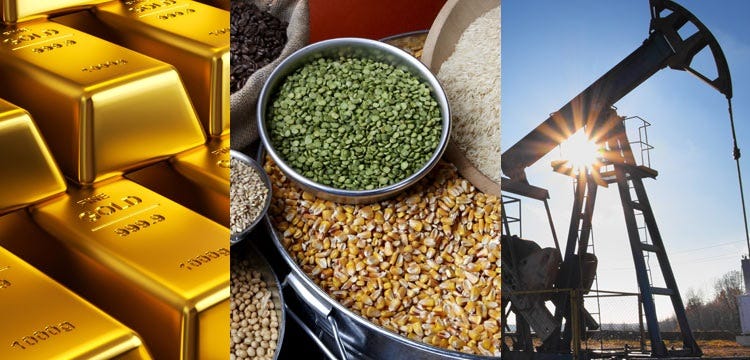When engaging in commodity trading, liquidity is the most crucial factor to keep in mind. Liquidity refers to how easily you can buy or sell a commodity. Simply put, it reflects the number of buyers and sellers in the market and whether trades can be executed smoothly.
A market with high trading volume, where supply meets strong demand, is considered liquid. This type of market generally poses less risk, as there’s usually another party willing to take the opposite side of your position. Additionally, high liquidity helps reduce the chances of slippage for traders.
Slippage is the discrepancy between the price at which a trader expects to buy or sell and the price at which the transaction is actually completed. This can work in your favor or against you; for instance, trading in illiquid commodities can lead to significant losses.
Low liquidity often results in erratic price fluctuations, making it essential for traders to focus on highly liquid commodities. Examples of such commodities include energy resources like oil and natural gas, precious metals like gold and silver, and agricultural products like cotton, soybeans, and wheat—products with large trading volumes.
Managing Liquidity Risk
One method to mitigate liquidity risk is by using risk management tools, such as guaranteed stop-loss orders. These ensure that your position will be closed at your predefined price level, regardless of market fluctuations.
Most Actively Traded Commodities
Here’s a list of some of the most traded commodities, based on data from the Futures Industry Association (FIA):
- WTI Crude Oil
- Brent Crude Oil
- Natural Gas
- Soybeans
- Corn
- Gold
- Copper
- Silver
West Texas Intermediate (WTI) Crude Oil
West Texas Intermediate (WTI), also known as Texas Light Sweet (ticker: CL), is a crucial benchmark in global oil pricing. Sourced primarily from the Permian Basin in the USA, this grade is categorized as medium crude oil due to its relatively low density and sweet because of its minimal sulfur content (about 0.34%). WTI is the standard for many oil futures traded on the New York Mercantile Exchange (NYMEX).
Learn more about trading CFDs on Oil >
Brent Crude Oil
Brent Crude (ticker: EB) is one of the three main oil benchmarks, representing approximately two-thirds of the global oil contracts. Extracted from the North Sea, it serves as the primary pricing reference for oil worldwide. It is categorized as light, given its low density, and sweet due to its low sulfur content.
Soybeans
Soybeans (ticker: ZS) are one of the most actively traded agricultural commodities. Over the past two decades, soybean production has surged, with its market capitalization exceeding $123 billion. The U.S. is the leading producer and exporter of soybeans, especially to countries like China, the EU, and Japan.
Natural Gas
Natural Gas (ticker: NG) is a non-renewable fossil fuel formed from ancient organic matter. It’s widely used for heating, electricity generation, and as a raw material in the production of plastics and other chemicals. The largest producers are the U.S., Russia, Iran, and Qatar.
Learn more about trading CFDs on Natural Gas >
Corn
Corn (ticker: ZC) is a staple food crop used not only for human consumption but also in the production of animal feed and ethanol. The U.S., China, and Brazil are the top producers. Corn prices can be volatile due to weather conditions, government subsidies, and geopolitical events that disrupt supply chains.
Gold
Gold (ticker: XAU) has long been valued for its beauty and role as a store of wealth. In addition to its use in jewelry, it is an essential component in electronics manufacturing. Major gold producers include Russia, Australia, and South Africa. Gold is widely considered a safe-haven investment during times of economic uncertainty.
Learn more about trading CFDs on Gold >
Copper
Copper (ticker: HG) is a versatile metal widely used in electrical wiring and manufacturing due to its excellent conductivity. Chile, China, and Peru are among the top copper producers. The metal’s price often fluctuates in response to global economic conditions.
Learn more about trading CFDs on Copper >
Silver
Silver (ticker: XAG) is another precious metal with diverse uses, including in solar panels and photographic films. While silver is also regarded as a store of value, many traders favor gold due to its higher perceived stability.
Learn more about trading CFDs on Silver >
Trading Commodities
Each commodity has its own unique set of factors influencing its price. For example, the prices of gold and silver can be affected by jewelry demand or as a hedge against inflation. It’s essential to perform thorough research and analysis before diving into commodity trading.
PFD Markets offers CFD trading on the world’s most popular commodities. Their advanced yet user-friendly platform includes a free demo account, educational resources, and a variety of trading tools for both beginners and experienced traders. PFD Markets also offers a free Trading Academy, which includes a helpful FAQ section, video tutorials, and a free eBook. Traders benefit from competitive spreads and a platform designed for ease of use, without sacrificing in-depth analysis and advanced trading options. Start practicing your trading strategies with the Free PFD Markets Demo Account today!










